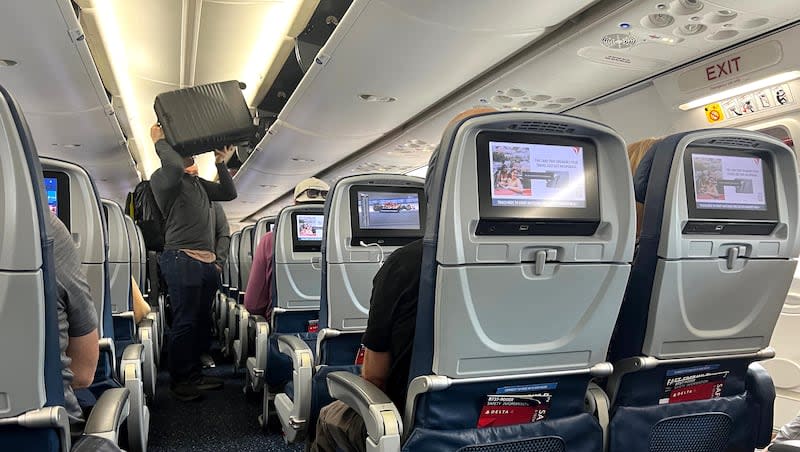Delta is changing its boarding process

Boarding a plane can often be a frustrating experience, particularly due to the lengthy process, straining to hear boarding groups and securing an overhead bin space — all before finally settling into a seat.
However, Delta Air Lines is hoping to streamline this process by changing how it calls boarding groups.
What is Delta Air Lines’ new boarding process?
Starting May 1, Delta is rolling out numbered boarding zones, one through eight, for all flights. Passengers will receive a zone number instead of boarding groups based on airline status or fare class. However, the boarding order will remain the same, per CBS News.
This change is similar to the process the company used back in early 2019, according to CNN.
Delta said in a statement to CBS News that the “simple change” will “provide customers more clarity into the boarding sequence and make the boarding process more intuitive — especially for infrequent travelers and/or customers who might face a language barrier at the gate.”
“Numbered zones will also align more closely with our joint venture and international partners, providing international customers a more simplified, consistent experience when traveling on mixed-metal itineraries,” Delta continued to CBS News.
To see a visual of the current boarding process and the new numbered boarding zones, check out this graphic from Delta Air Lines.
Should you board a plane first or last?
Hoping to make the boarding process quicker and easier for yourself? Besides having family members, luggage, bathroom breaks and snacks all situated, considering your boarding time can significantly improve efficiency.
Deciding whether to board a plane early or late ultimately comes down to personal priorities for you and your family. On one hand, one author on The Points Guy explains his preference for boarding early when your group is called:
Less stress (makes sure you will not miss your flight).
Available space in the overhead bins for luggage.
More time to get settled in.
Time to sanitize the area you’re sitting in.
In comparison, Lonely Planet spoke to individuals about why they board planes last:
Bypass stressful and crowded lines.
Have more leg room and time to stretch before sitting in a tight space on the plane.
There are usually a few spots left in overhead bins. If not, the crew will gate-check the bag.
Why is boarding a plane so inefficient?
According to CNBC, during the 1970s, Southwest Airlines, for example, had an average turn time of 10 minutes, from the plane’s arrival at the gate to its departure. However, in present times, this figure has extended to approximately 45 to 55 minutes.
New York Magazine found reasons why airline boarding proves inefficient:
Size of overhead bins: Increased checked bag fees, leading to more passengers placing baggage in overhead bins.
Boarding groups: Airlines may have six to 10 distinct groups to board at separate times.
Boarding the plane front to back.
Jason Steffan, an associate professor of physics at the University of Nevada, Las Vegas, studied how to make airplane boarding better, per USA Today.
His computer model analyzed millions of boarding methods and found the fastest one: Passengers in window seats board first, followed by those in middle seats and then aisle seats. However, this approach doesn’t account for families staying together or accommodations for disabled passengers, according to USA Today.
Noting this “more efficient” way is unlikely to be adopted, Steffan suggested other options: Stop trying to get individuals on in a certain order and put carry-on bags away faster, per USA Today.

